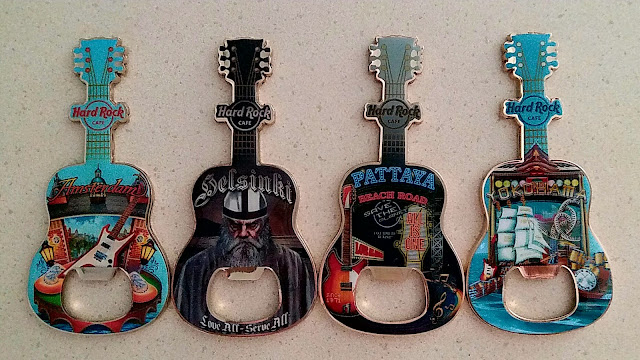I travelled to only 2 places in 2016. But there were many learning opportunities throughout the year to improve my career prospects, health and just for the sake of pursuing passion. Here goes:
***************************************
Travelled to Nepal (again!). Was supposed to do Everest Base Camp but was unsuccessful because we couldn't fly into Lukla where the trek begins. You can read all about it here.
View of Kathmandu city from the rooftop of Hotel Yambu.
***************************************
Travelled to Kuching, Sarawak for the first time. Went there to participate in the Kuching Marathon.
Also took the opportunity to visit some interesting sights in Kuching and gluttoned all the way with Kuching food.
***************************************
Took part in 2 fun runs: Kuching Marathon and Score Run.
Finishers medal.
Will be doing my first 10km on 8 January 2017 at the MPI Generali Run. Keeping fingers crossed that I'll be able to complete the race within 1 hour 15 minutes which is the time limit I've set for myself.
***************************************
Enrolled for the Chartered Bankers course offered by the Asian Institute of Chartered Bankers.
I completed my first module, Marketing and Selling in Financial Services on 20 November 2016.
I've got 2 more papers to sit in April 2017 before I move on to the final level, i.e. Chartered Bankers level.
This is how the study text look like.
***************************************
Started taking up tai chi and completed learning the 37 steps, Cheng Man Cheng style on 19 October 2016.
Attended push hands technique workshop on 21 October 2016 at Cova Square in Kota Damansara. The workshop turned out to be a self defence class instead of push hands which was a disappointment. What a bloody waste of RM399.00.
***************************************
Completed a Basic Nail Course where I learned to give a manicure, pedicure and buffing amongst other things.
Somehow I've developed an interest in making nails look pretty and healthy. I still need to work on my nail polish application though, to make it look flawless.
My manicure/pedicure kit which is included in the fees.
***************************************
Added 4 Hard Rock Cafe bottle openers to my collection, i.e. Amsterdam, Helsinki, Pattaya and Yokohama.
I could have added Lisbon, Macau and Munich to the collection, but was on a cost discipline exercise. Hard Rock Cafe bottle openers don't come cheap, you know ...
***************************************
Started embracing a minimalist lifestyle because we actually don't need much to live. Having less stuff also means more space to free my flat and mind. Cleaning my flat is also so much easier with less stuff lying around.
I started this minimalist lifestyle by slowly decluttering my stuff using the Konmari method. It's a slow process but I'm getting there.
**************************************
Happy New Year 2017 everyone !
















































.jpg)
.jpg)
.jpg)
.jpg)

.jpg)
.jpg)
.jpg)